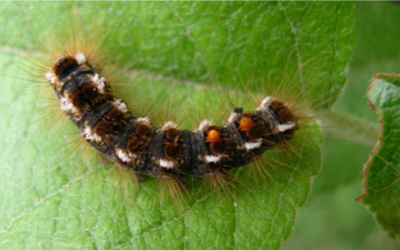
211 Now Available for Browntail Moth Questions
Maine Government News
AUGUSTA – The Maine Center for Disease Control and Prevention (Maine CDC), Maine Forest Service (MFS), and 211 Maine announced today a new way for Mainers to get information about browntail moths. People with questions can now call 211 Maine to speak to a specialist regarding browntail moth biology, management, pesticide options, health concerns, reducing toxic hair exposure, and potential public policy and economic impacts.
This service is available by dialing 211 (or 1-866-811-5695), texting your zip code to 898-211, or emailing info@211maine.org .
211 Maine will serve as a hub for all State of Maine agencies involved in browntail moth issues.
211 info from maine.gov
The Browntail Moth (Euproctis chrysorrhoea) was accidentally brought to Massachusetts from its native Europe in 1897, and soon after spread to the rest of New England and also moved into New Brunswick and Nova Scotia.
The ‘problem’ with this insect derives mostly from the fact that it is armed with defensive, barbed hairs–throughout its life cycle but especially in the very hairy caterpillar stage–which break off and, for many people exposed to the hairs, cause skin rashes, headaches, and even difficulty breathing. The caterpillars have a huge host range of plants that they feed on.
The moths, which fly at night and are active in July and August (and are attracted to light), have a wingspread of about 1.5 inches (36-42 mm). The wings and midsection are solid white on both the male and the female. The abdomen has brown on it, and the brown coloration extends along most of the upper surface of the abdomen in the male, whereas in the female, the top (upper surface) of the abdomen is white, but the tuft of brown hairs is much larger.
- Additional and Detailed Information (with photos): Browntail Moth (Maine Forest Service) (includes a video on removing browntail caterpillar nests)
- A report on some UMaine research on Browntail Moth
Maine CDC; Maine CDC Browntail Moth
